Top 11 Pull-Up Alternatives: Exercises You Can Do Without a Bar
Pull-ups are powerful for developing upper-body strength, but not everyone can execute them immediately or has access to a pull-up bar. Pull-up options can help with that. Without specific equipment, these workouts provide efficient methods to work the same muscular groups, such as the lats, biceps, and core. Pull-up alternatives offer convenient ways to help you increase your strength, posture, and general fitness level, whether you’re working out at home or want to change your routine. The greatest pull-up alternatives and how they might complement your fitness goals will be discussed in this post.
Benefits of Pull-Ups
Strengthening:
Pull-ups work the latissimus dorsi (lats), biceps, deltoids, and core, among other muscular groups.
Increased Grip Strength:
Using an overhand grip or palms facing inward to hold the bar increases grip strength, which is necessary for a variety of sports and everyday activities.
Improved Posture:
Pull-ups help to improve posture by strengthening the muscles that support the spine.
Versatility:
From aided pull-ups to more complex varieties, you can adapt pull-ups to your level of fitness.
There are, however, several efficient substitutes if you lack a pull-up bar or find pull-ups difficult. These strength-building workouts don’t require a pull-up bar.
Top Pull-Up Alternatives
- Assisted Pull-Ups Machine
- Assisted Pull-Ups with an Exercise Band
- Doorway Rows
- Inverted Row
- Bent-Over Dumbbell Rows
- Renegade Row
- Lat Pulldown
- Standing Cable Lat Pulldown
- Barbell Bent Over Rows
- Single Arm Lat Pulldown
- Seated Cable Row
Assisted Pull-Ups Machine
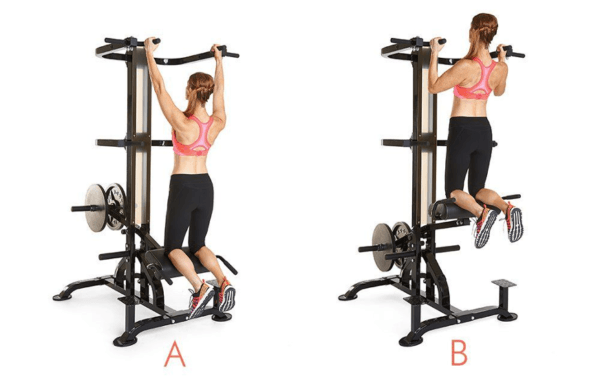
This exercise equipment supports a portion of your weight and simulates the pull-up motion. Place your legs on the support pad and begin by holding the bar at shoulder width. Lift yourself and squeeze your shoulder blades at the top to concentrate on doing a full pull.
Benefits:
- Ideal for newbies.
- Builds confidence and upper-body strength gradually.
Assisted Pull-Ups with an Exercise Band
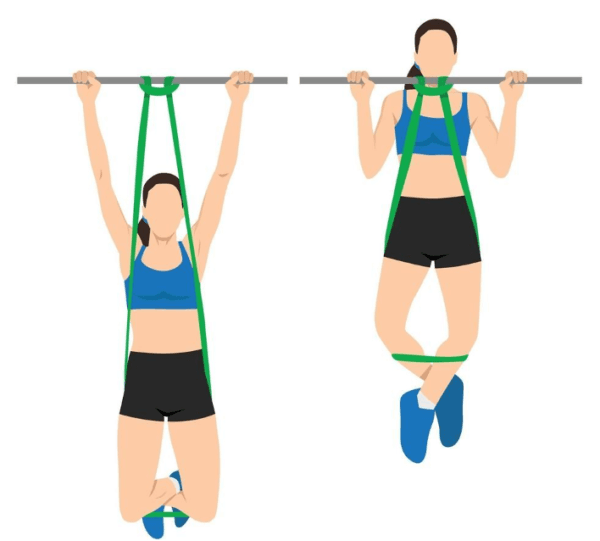
To support some of your weight, coil a resistance band around a strong overhead object. Put your feet in the band loop, grab the bar with an overhand grip, and pull yourself up.
Tips:
To prevent injuries, make sure the band is well fastened.
Benefits:
- An economical and portable way to perform aided pull-ups.
- Aids in building the strength required for pull-ups without assistance.
Doorway Rows

Not even a pull-up bar? A strong door may make all the difference! Lean back in a starting position with your arms outstretched, holding both sides of the door slightly open. Push yourself forward until the door is almost in contact with your chest.
Benefits:
- Obtainable at home without the need for additional equipment.
- Works the muscles used for pull-ups, including the lats.
Inverted Row

Use a solid table or place a barbell at waist height on a squat rack. Pull your chest toward the bar while maintaining a straight body by lying underneath it and grabbing it with an overhand grasp.
Tips:
To make it harder or easier, change the height of the bar.
Benefits:
- Strengthens your core and upper back.
- Perfect for novices moving on to pull-ups.
Bent-Over Dumbbell Rows
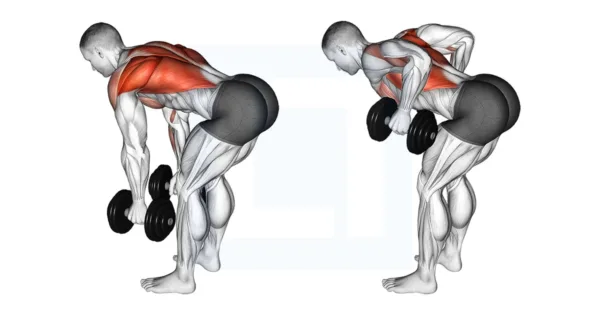
With your hands facing inward, hold a dumbbell in each hand. Pull the weights toward your torso while maintaining a straight back by bending at the hips. At the peak of each repetition, concentrate on compressing your shoulder blades.
Benefits:
- Focuses on the biceps and lats.
- Excellent for building up your pulling power.
Renegade Row
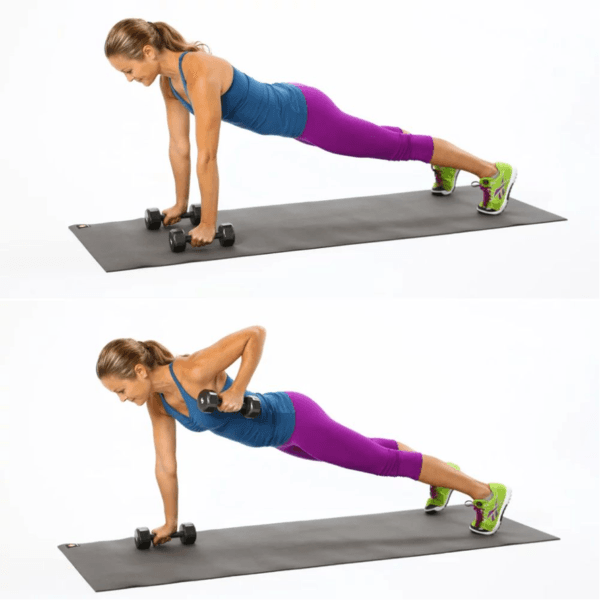
Hold a dumbbell in each hand as you start in the plank position. Balance on the opposite arm and pull one dumbbell toward your torso. As you switch between sides, keep your core active.
Tips:
For more stability, spread your feet apart.
Benefits:
- Increases upper-body strength and core stability.
- Works for several muscular groups at once.
Lat Pulldown
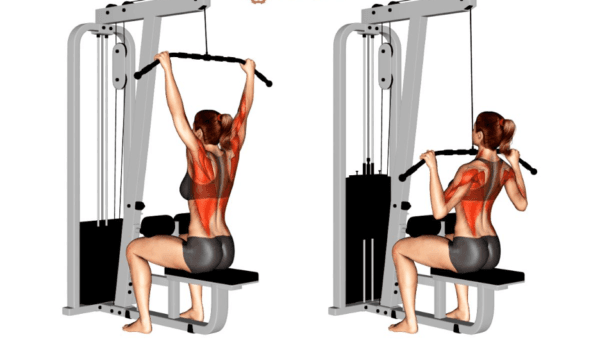
The lat pulldown machine is a great substitute if you have access to a gym. Maintaining a controlled motion, grasp the bar at shoulder width, sit with your legs secured, and bring it down toward your chest.
Benefits:
- The same muscles that pull-ups target are used.
- Resistance can be changed to suit all levels of fitness.
Standing Cable Lat Pulldown
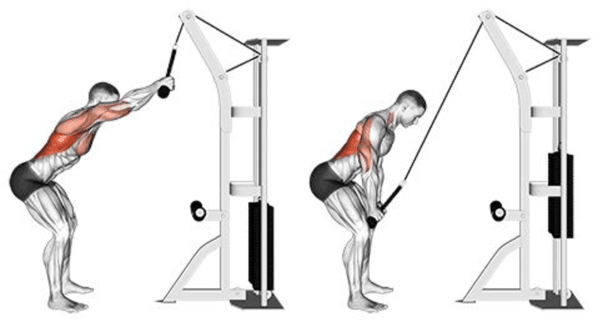
Attach a straight bar with a cable machine and pull it down while standing. In the beginning, posture, make sure your arms are outstretched high, and concentrate on controlling your motions.
Benefits:
- Attach a straight bar with a cable machine and pull it down while standing. In the beginning, posture, make sure your arms are outstretched high, and concentrate on controlling your motions.
Barbell Bent Over Rows
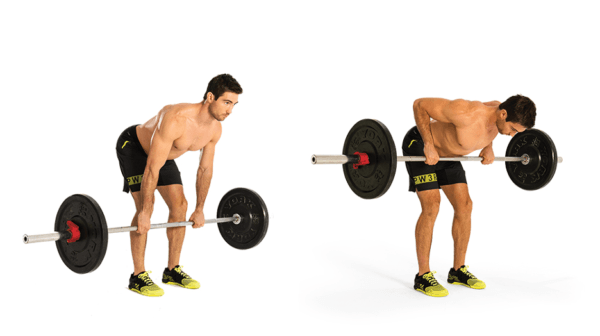
Gripping a barbell that is loaded on the floor, bend at the hips while maintaining a flat back. Lower it back to the floor after pulling it toward the back of your body.
Benefits:
- Increases the strength of the traps, rhomboids, and lats.
- Increases the total pulling power.
Single Arm Lat Pulldown

Keeping your elbow close to your side, use one arm to pull the handle of a cable machine down. On the working side, concentrate on isolating the lat.
Benefits:
- Rectifies imbalances in the muscles.
- Increases the range of motion.
Seated Cable Row
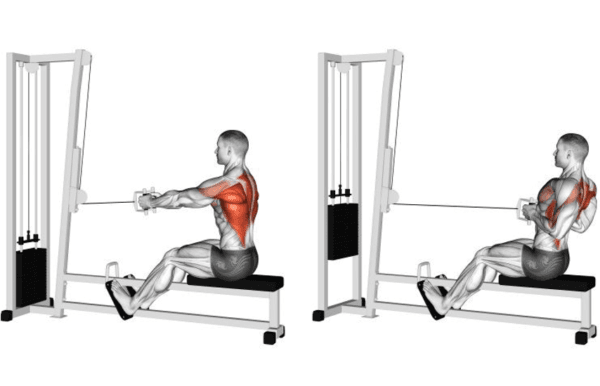
Keeping your back straight, sit at a cable row machine, grasp the bar, and draw it toward your torso. During the peak of the movement, concentrate on pressing your shoulder blades together.
Benefits:
- Engages the rhomboids, traps, and lats.
- Enhances upper-body strength and posture.
FAQ’s
Which muscles are used in pull-up substitutes?
Pull-up substitutes work the core, rhomboids, traps, lats, and biceps.
Can grip strength be increased using pull-up substitutes?
Indeed! For building grip strength, exercises like lat pulldowns and renegade rows are great.
Are resistance bands a good substitute for pull-ups?
Of course. Particularly in assisted pull-ups, resistance bands offer support and aid in simulating the pull-up motion.
How frequently should I perform different pull-up exercises?
Try to work out these muscle groups two or three times a week for optimal effects.
What is the greatest pull-up substitute for newbies?
Two excellent beginning exercises are the lat pulldown and aided pull-ups using a resistance band.
Conclusion
Although pull-ups are a great workout, there are other ways to strengthen your upper body. These pull-up alternatives guarantee that you can reach your fitness without a goals pull-up bar, whether you’re at home, the gym, or on the go. When you include these workouts in your program, you’ll notice an increase in your strength and confidence.







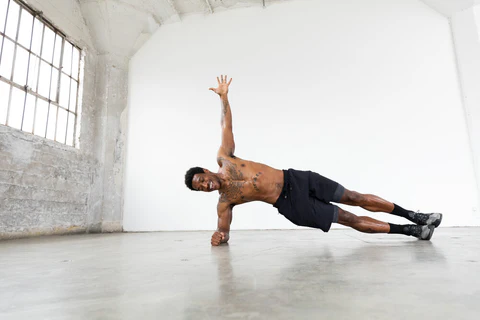
Leave A Comment